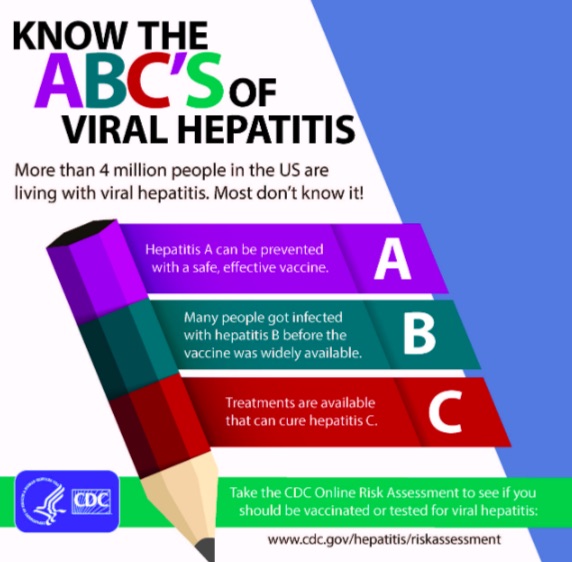May is Hepatitis Awareness Month. So, it’s a good time to learn the risks of a highly contagious virus that can be spread through food.
Hepatitis, a virus that causes inflammation of the liver, affects 400 million people worldwide and about 4.4 million live in the U.S., according to the Centers for Disease Control and Prevention (CDC). The five main types of hepatitis, A, B, C, D, and E, cause varying degrees of illness. Hepatitis B and C can result in a lifelong, chronic infection. Hepatitis A, the virus associated with foodborne illness, causes symptoms that can last for weeks or months.
What You Need to Know About Hepatitis A
Hepatitis A is highly contagious. Sometimes, people who are infected show no symptoms. And people who do develop symptoms are contagious weeks before they appear.
Symptoms of Hepatitis A include yellowing of the skin or the eyes, fever, fatigue, loss of appetite, dark urine, clay-colored stools and vomiting. These symptoms usually develop two weeks after exposure and can last for months. However, they can be prevented if a vaccine is given within two weeks of exposure.
When an infected food handler uses the bathroom, does not wash hands properly and then touches food, the virus can be transferred to food and infect those who eat it. Other groups at high risk are men who have sex with men, people experiencing homelessness and people who use drugs.
An Increase in Cases
Between 2016 and 2018, hepatitis A infections increased by 294 percent from those reported between 2013 and 2015, according to a study published in the CDC’s Morbidity and Mortality Weekly. Most of these illnesses were reported among people reporting drug use or homelessness. The study authors recommended increased vaccinations among those high-risk groups.
FDA Virus Sampling Program
Between 1997 and 2016, three hepatitis A outbreaks and one norovirus outbreak were linked to frozen berries. Because viruses can survive low temperatures freezing does not kill them.
In November, the U.S. Food and Drug Administration (FDA) began sampling program for frozen berries. Domestically, the agency is collecting and testing samples from facilities that pack, process and distribute berries and from warehouses, and retail locations. The FDA is also collecting imported samples. Results from these finding will be posted quarterly on the agency’s website.
